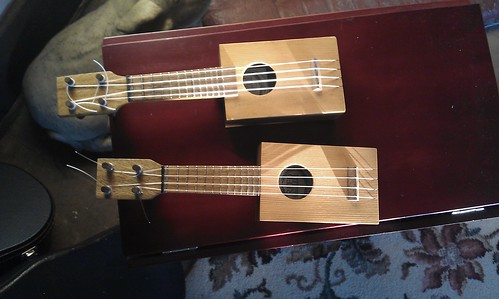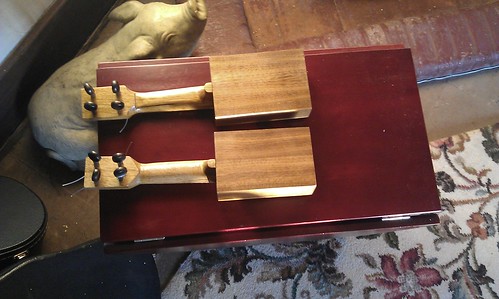1. By rocking the bridge back and forward (if a fixed bridge).
2. By pushing it down and relaxing (for both fixed and floating bridges).
This helpfully explains (to me) why a higher saddle = more volume (greater rocking leverage for (1), greater downforce for (2)). It also explains why floating bridges tend to produce less volume than fixed (mainly (2), little or no (1))
But I'm fairly sure this is wrong, either wholly or in part. So, primarily, I just want to know.
This question is partly because I recently made a pair of (silly but fun) 7 inch scale ukuleles:


I used a floating bridge because I had no idea what compensation might be required, and they turned out to be surprisingly loud for their size.
One day I might try a tenor guitar with a floating bridge, and if I knew how strings worked this might help me work out how thick to make the top and howlightly to brace it.